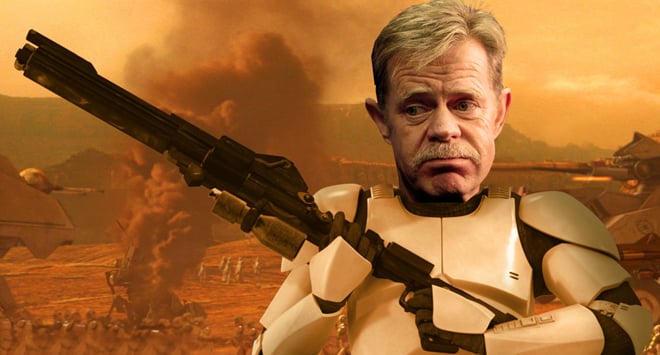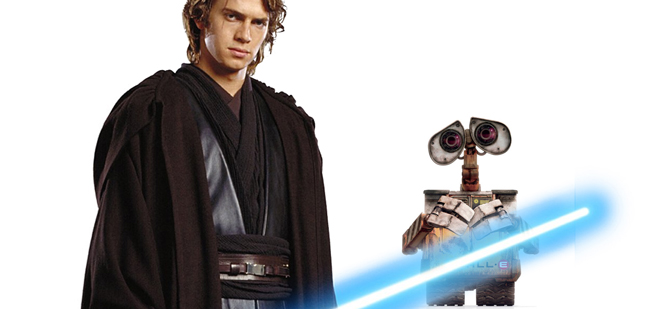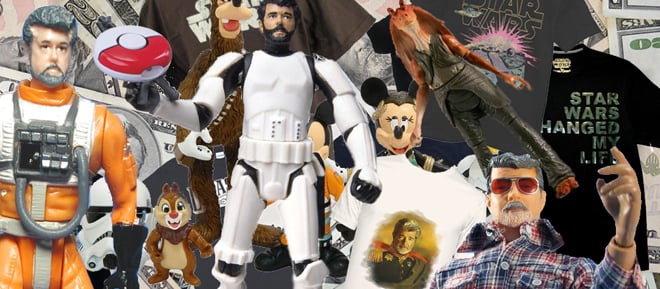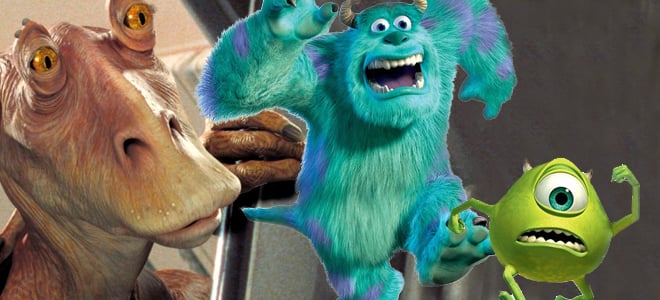Six Reasons Pixar Is Better Than George Lucas
Will Finding Dory suck harder than Cars 2? Probably. But it'll still be better than Attack of the Clones.

Remember when you used to watch Toy Story pretty much every rainy day when you were at school, or on the bus to camp, or when someone broke up with you when you were 23 — and how no matter how many times you’d seen it, you got all choked up every time? This wasn’t just because it was the best computer-animated thing you’d ever seen pre-1995; it was because it brought to life a heartening tale with such convincing anthropomorphism that it made The Little Rascals look like a pile of puke.
I might’ve been the last person with an internet connection to have seen The Pixar Story, but once I did, I felt all life-affirmed by this bunch of people who wanted to utilise new technologies to expand the possibilities of their medium, and who (after losing a lot of money) finally succeeded in doing so. So here’s why another proponent of CGI, Star Wars’ director George Lucas – who initially backed Pixar in their Tron-inspired dream, then went on to make the most disappointing trilogy of all time (imho), then went on to sell his production company Lucasfilm to Disney last year (which owns Pixar; are you following?) – sucks in comparison.
1. Computers!

A veritable special-effects cowboy post-1999, George Lucas’ original Star Wars films were all about making do with what you had. In the ’70s and ’80s, you didn’t have the technology to cram hundreds of Jedi into a frame, so you had to rely on dialogue and strong characters to propel the plot and keep the audience interested. It seems that once Lucas could have as many wacky creatures and killer robots in his movies as he wanted, he didn’t have to worry about relationships or any of that boring human stuff. On the flip side, even though Pixar’s entire studio was based around new animation technology and their Pixar Image Computer – developed initially by a division of Lucasfilm, and later used at Disney – for them, story usually comes first (although they admittedly do some things just because it looks cool). Mostly, technology for Pixar is just a tool that provides other ways to tell a story.
2. Real actors, or real characters?
The characters in Episodes I, II and III for the most part propel the plot, but we’re never given any actual insight into who they are, or how or why they develop their relationships (e.g.: the Anakin/Amidala romance seems amateur compared to the Han Solo/Leia one). These one-dimensional figures are easily outdone by Pixar’s toys, animals and monsters, who have complex personalities with which we become quickly acquainted. Instead of flooding the frame with uniformed clones or emotionless droids, Lucas should have given us someone we care about – someone with a face we could become endeared to.

3. Everybody needs a hero:
On that topic, I want to borrow from Mr. Plinkett’s review of The Phantom Menace for a second and point out that these films have no real protagonist (think about it: it’s not Anakin). With no one to worry about, or relate to, or proceed on a linear journey with, we’re left confused about why we’re even watching in the first place. Meanwhile, Pixar made us sympathise with a speechless robot in Wall-E simply by exposing us to his solitude.

4. Merch or movie: what came first?
Star Wars really does seem like an exercise in merchandising. He probably even gave the Pokemon guys the idea. (Related: there’s an astonishing amount of George Lucas action figures on the internet.)

5. Collaboration
Some people chalk up the lacklustre (or epically disappointing) results of The Phantom Menace, Attack of the Clones and Revenge of the Sith to Lucas’ being given free reign on the prequels. Apparently the original trilogy was produced in a much more collaborative environment, where actors were given a lot less direction — even wrote many of their own lines — and the editing team was allowed way more freedom.

Also, Lucas didn’t write The Empire Strikes Back or Return of the Jedi, which is a pretty obvious point of difference. I initially thought that I’d found the politics and confusing plotlines of I, III, and III tough because I was about 13 when I watched them. It wasn’t that, though: they’re tough because they’re overly complicated, and often internally contradictory. When you watch backstage footage, the main expression on the faces of the cast and crew is incredulity. Comparatively, Pixar is composed of a massive team of people with a rotating stable of directors supported by huge departments collaborating on each component of the films — all, of course, made to feel as important as each other. Though a system like this runs the risk of vision being carried far away from the creator’s intention, you can’t argue that several minds – and critical eyes – are better than one.
6. Jar Jar Binks is way less cute than, like, every Pixar character ever.

He sucks.
—
Dijana Kumurdian writes about art, design and expensive things (like yachts) at her day job at Vogue Living, and in her spare time is a freelance music writer, Photoshop hobbyist, hip hop DJ and longtime slacker rock fan.